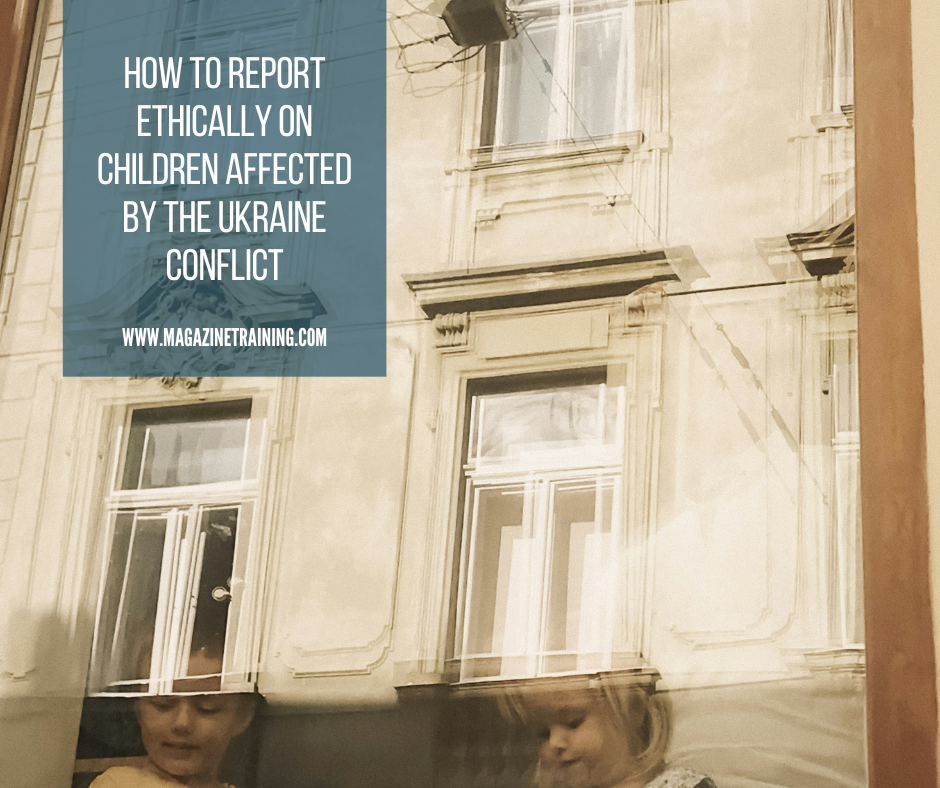
As events in Ukraine continue to unfold quickly and dramatically, children and young people are in danger – one million are already on the move.
This tip sheet brings together advice from Dart fellows who have reported on children in war and other emergency situations. Click here for a Ukrainian translation.
1. Ask yourself if you really need to approach a child for your story
If you want to interview a child, can you get the story from an adult instead, and engage the child only to play and fill in other details? Can you tell the story by using other resources, such as data? “Children’s stories can often be communicated without focusing on the possibly traumatic event you’re trying to cover. Asking simple questions that may not trigger a child in a traumatic situation, like their age, name, favorite food are ways to include the child in the report but without risking their well-being for your story,” says Cengiz Yar, a documentary photographer and photo editor currently based in El Paso, Texas, who authored “Syria’s children” documentary project.
2. In fast-moving situations, trust is important
This is especially important for visual journalists, as Donna De Cesare, an award-winning photographer and Associate Professor of Journalism at the University of Texas in Austin, points out. “In fast moving situations you can’t always safely talk to the people in the photographs you make, but you should always attempt to do so. This helps avoid the problem of making assumptions about what is going on based on appearances and will provide you with more accurate and detailed captions. You can signal who you are with a press badge, body language and eye contact. Trust is especially important, and transparency and respect are helpful,” she says.
3. Explain who you are and get consent
Some people may be less used to journalists than others, so be respectful and understand the context first. Initially, you may have to learn more about the child’s family — is an older sibling is now in charge? Talk to the child’s family and explain why you are there and what you are doing. For example, give details of the publication you work for, the format you will be using, and explain why this interview is important. When you have consent, repeat to the child that their parent or guardian is OK with the interview, and try to get their consent too. Children may feel helpless in a context of emergency, and being asked directly for their permission can give them a sense of agency, says Kate Porterfield, a consulting clinical psychologist at the Bellevue Hospital Program for Survivors of Torture in New York City.
4. Don’t overpromise
You are neither a psychologist nor a friend, so don’t promise that a child will feel better if they talk to you. Also, make sure the people you are interviewing know that your work is unlikely to change their personal situation, but may be able to help others in the future. Ismail Einashe, an award-winning writer and senior journalist at Lost in Europe, a cross-border journalism project that investigates the disappearance of child migrants in Europe, says it is important to be upfront. This is one of the ways he approaches families: “Speaking to me will not change your situation, but it may help people understand the plight of people in displaced camps, or experiences of child refugees.”
by Irene Caselli
Photo by Rostyslav Savchyn on Unsplash
Related posts
Magazine Training International’s mission is to encourage, strengthen, and provide training and resources to Christian magazine publishers as they seek to build the church and reach their societies for Christ.

